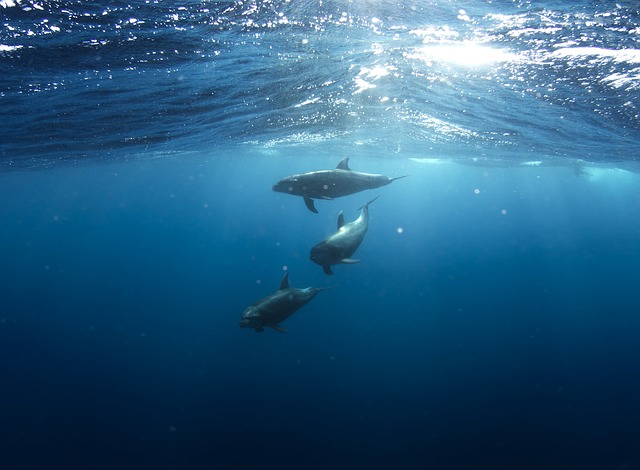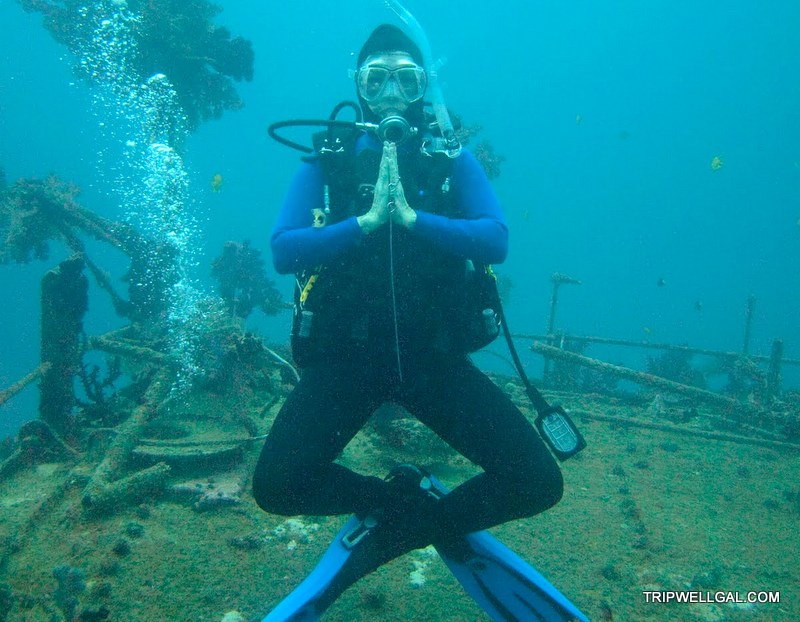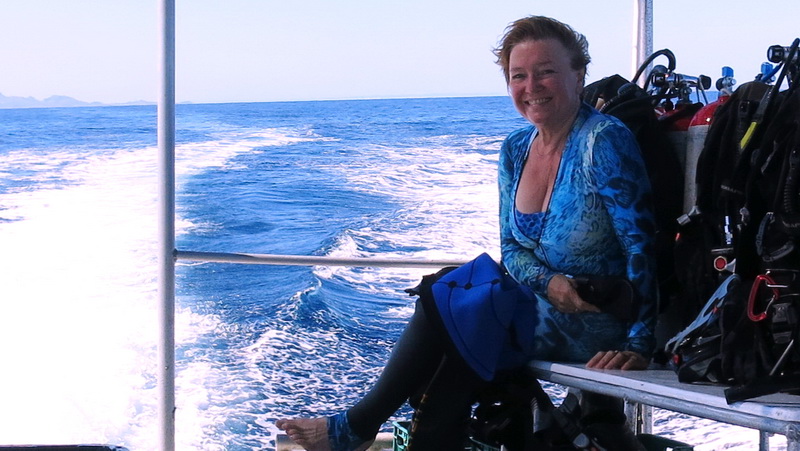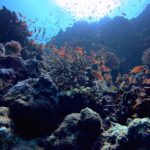Learning to Dive Abroad: Stories and Tips from Elaine Masters

Diving with sharks in a foreign country may seem daunting to most people. But it wasn’t for Elaine Masters, who has now dived with sharks (and many other creatures!) in Fiji, Catalina Island, Cozumel and more. She has also made sure to explore the places she’s visited, beyond the ocean. We recently spoke to Elaine about her experiences learning to dive abroad, and then mastering the sport around the world in different destinations. From how she had the courage to take her first plunge, to her most frightening encounter with sharks in Mexico, Elaine shared many insights with us and she does on her blog too! Here are some of her tips and tales.
Tell us about how you first got into diving?
I always loved snorkeling but haven’t been a fan of high tech sports, so diving wasn’t on my radar. It wasn’t until my then-new love, an underwater photographer and fisherman, invited me to join him in Cozumel. I arrived the day before he did and on his suggestion tried a resort dive. I instantly fell in love with the underwater world and spent the rest of the trip getting my PADI certification.
Where has been your favorite dive spot?
The Fijian area of Tavenui, my first long-distance dive trip, was the most diverse and interesting. Everything was still new: bright, clear water, pinnacles, plate corals, turtles and drift diving. Second and most recent was floating on the Sulu Sea in the Philippines during a five-day live-aboard exploring the UNESCO World Heritage site, Tubbatha Reef. That water is extraordinary and I’ll never forget the sunrises across the endless horizon.

Tell us about what its like to go shark diving specifically?
My first shark dive was on my second trip to Fiji. We were there with underwater film pioneer, Chuck Nicklin, for his 85th birthday. I was scared but determined, even while watching the crew chum the water. Snapping jaws grabbed fish heads while we pulled on our gear and I thought, “I’m getting into that water!”
We were carefully instructed to go down, stay in a line, that the sharks don’t like bubbles and won’t cross through. Once in position, I noticed a garbage container filled with fish heads about ten feet in front of us. Before it was opened, the water grew thick with fish of all sizes. Lemon, White and Black Tip, Nurse and Bull sharks all showed up at the appointed time. They would pass near the Fijian wearing a chainmail glove as he tossed fish heads into their mouths! It was almost matter-of-fact!
Chuck was next to me and began shouting into his mask when a massive Tiger shark came in right over my head. In all his visits, he’d never seen one. She was gorgeous and I wanted to stroke her stripes as she passed. She couldn’t care less about the bubbles! It was chaos and wonderful. I survived. The Fijians consider it a blessing to be visited by a Tiger shark. I have to agree.
Have you ever felt afraid while diving?
A few times. Diving is a technical sport and I learn through repetition, so I was about 30 dives in before I felt comfortable. On one of my earliest dives off Catalina Island, I got tangled in seaweed but was too green to panic. Luckily, my dive buddy turned around to cut me free.
The scariest time was recently, on a wreck dive off Cabo Pulmo in Mexico. We were a small group of about eight, mostly South Americans, and our dive master spoke English reluctantly. He said, “There’s a scattered wreck and you might see sharks,” then we jumped in.
The water was murky as we approached the wreck, and the group started scattering. A pod of large Bull sharks began circling us, taking turns approaching head on, then turning sharply. I’ve never seen that kind of aggression before, and wedged in between the dive master and my buddy. What was most frightening as we kept slowly moving forward along the bottom was watching the other divers approach the sharks to get pictures! The dive master couldn’t manage the group and I was terrified that someone was going to be bitten. I don’t want that image in my consciousness! We made it out intact, and no-one else seemed as alarmed as I was.
When you go on a diving trip do you typically explore the destination further, beyond the sea?
Not on my first dive trips, and I really felt the lack. Serious underwater photographers go to a lot of trouble and expense to put themselves in proximity to their subjects. Most seem happy to spend days doing that and then going home.
On another trip with Chuck Nicklin, we stayed at a small dive resort in Lembeh Straits on North Sulawesi. It’s home to some of the rarest creatures in the sea, and it was exciting to see them. Not having very good camera gear, I would swim in circles around the group, spearing floating plastic bags with my pointer and taking them back to the garbage cans near our room. I jumped at the chance to get out of the compound when a few of us hired a jeep to go into the jungle and spot Tarsier monkeys. Another day we went to the central market for total cultural immersion. The teenager with us was shocked to see chickens being slaughtered and dog meat for sale. I was crushed by the garbage littering the streets. I’ve written about the impact and some of the solutions that have since been developed. Now any dive trip I go on includes days exploring on land.

Any tips for women wanting to learn to dive while traveling?
There are so many ways to become a diver. My path was fairly simple: I had warm water, a willing dive buddy and the opportunity to tag along on his travels. He has done thousands of dives and isn’t a teacher, so I learned early on to stay close to the dive master/guide on every dive until I could keep up easily. Find a way to make diving easy and you’ll stick with the sport.
I was lucky to start at a warm water dive shop in Cozumel that had excellent PADI-certified trainers. I marvel at San Diego divers who walk into cold waves on their first dives. I would’ve stopped there! Still, there are no shortcuts. I’ve made lots of mistakes and had to swallow my pride and just keep at it. Ask questions, make sure your gear is comfortable and works. Ask more questions and dive as much as you can.
There are dive meetups, and dive shops offer used gear and arrange trips. That’s a great way to meet dive buddies and keep expenses down too. I often travel with a regulator, mask, and fins then rent the rest of the gear if the costs aren’t prohibitive at my destination.








